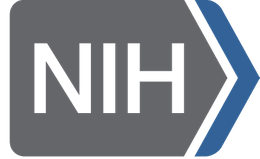Prescription Drug Abuse: Commonly Abused Meds
Know the types of drugs most often abused
The types of prescription medications most commonly abused by people of any age are
- opioids, which are strong painkillers
- depressants, which are used to treat anxiety and sleep disorders
- stimulants, which are typically used to treat attention deficit hyperactivity disorder (ADHD), narcolepsy (a sleep disorder), and, in some cases, to improve symptoms of depression.
Opioids
Doctors prescribe opioids mainly to relieve pain. Short-term, medical use of opioids is safe and rarely causes addiction. However, long-term use of opioids, or use in a way not prescribed, can lead to physical dependence or addiction.
Common opioid prescription medications include:
- morphine (MS Contin®, Kadian®, Avinza®), which is used before and after surgical procedures to treat severe pain
- codeine (Tylenol with Codeine®, Robitussin AC®), which is prescribed for mild pain
- hydrocodone (Vicodin®, Lortab®, Zydone®), which is prescribed to relieve moderate to severe pain
- oxycodone (OxyContin®, Percodan®, Percocet®, Tylox®, Roxicet®), which is used to relieve moderate to severe pain
- fentanyl (Duragesic®), which is a strong pain medication typically delivered through a “pain patch” and prescribed for severe ongoing pain.
Depressants
Depressants are used to treat anxiety and sleep disorders. Depressants slow normal brain function, and decrease blood pressure, heart rate, and breathing. They can cause confusion, drowsiness, fatigue, and impaired coordination. Long-term abuse can lead to addiction.
Here are commonly prescribed depressants:
- Benzodiazepines are used to treat anxiety, acute stress reactions, and panic attacks. Examples are diazepam (Valium®), and alprazolam (Xanax®). Some benzodiazepines, such as clonazepam (Klonopin), are prescribed for short-term treatment of sleep disorders.
- Non-benzodiazepine sleep medications are also used to treat sleep problems, but typically with fewer side effects and less risk of addiction than benzodiazepines. Examples are zolpidem (Ambien), eszopiclone (Lunesta), and zalepon (Sonata). They differ in chemical structure from benzodiazepines, but act on some of the same brain receptors.
- Barbiturates are used to treat sleep disorders and seizures (epilepsy). Examples are seconal sodium (Secobarbital®), mephobarbital (Mebaral®), and pentobarbital sodium (Nembutal®).
Stimulants
Stimulants are used to treat attention deficit hyperactivity disorder (ADHD), narcolepsy (a sleep disorder), and depression that has not responded to other treatments. These medications increase alertness, attention, and energy. They includemethylphenidate (Ritalin® and Concerta®) and amphetamines (Adderall®). Stimulants increase blood pressure and heart rate, constrict blood vessels, and produce a sense of euphoria in some people.
Based on content from the NIH Senior Health publication, “Commonly Abused Medications.”

The National Institutes of Health, a part of the U.S. Department of Health and Human Services, is the nation's medical research agency — making important discoveries that improve health and save lives. NIH is the largest single source of financing for medical research in the world, seeking new ways to cure disease, alleviate suffering and prevent illness. By providing the evidence base for health decisions by individuals and their clinicians, NIH is empowering Americans to embrace healthy living through informed decision-making. NIH is made up of 27 institutes and centers, each with a specific research agenda, focusing on stages of life, like aging or child health, or particular diseases or body systems.

